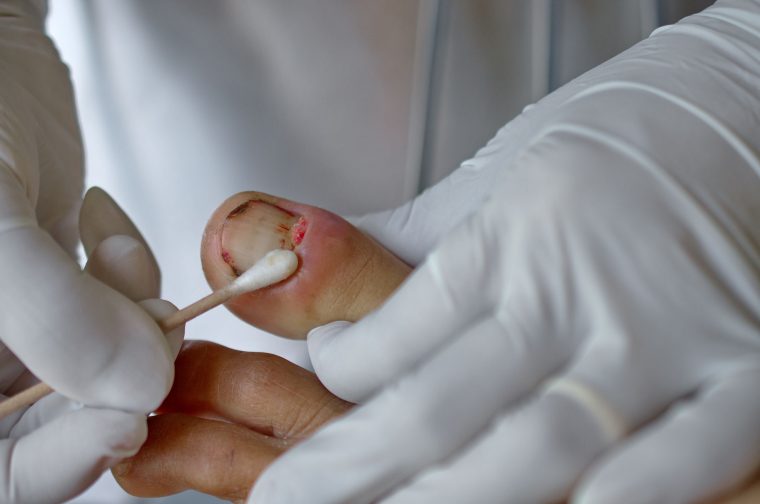What is a Fungal Infection?
A fungal nail infection (Onychomycosis), is an infection caused by an organism called fungus that lives in warm and moist areas of the toe nail.
Fungus of the toenails is a common problem that can affect people of all ages, although it most commonly affects individuals who are older.
Toenail fungus often begins as an infection in the skin called tinea pedis (also known as athlete’s foot). The fungus often starts under the nail fold at the end of the nail. Over time it grows underneath the nail and causes changes to its appearance, such as a yellow or brownish discolouration. It can also cause thickening and deformity of the toenail. Onychomycosis can also be accompanied by a secondary bacterial or yeast infection in or about the nail plate.
Treatments
It is best to treat the condition as soon as it is noticed. In early cases, over the counter anti-fungal medications such as Daktarin, Canesten, Lamisil, Loceryl etc. may be sufficient. It is also important to treat any concomitant athlete’s foot that may be present. However, bear in mind that it usually takes up to 12 months to show changes. In more advanced cases, a prescription medication may be needed.
There are forms of tretments available such as tea tree oil and laser treatment but their effectiveness are in questions as research has showen mixed results.
In some cases, surgical treatment may be required. Temporary removal of the infected nail can be performed to permit direct application of a topical anti-fungal. Permanent removal of a chronically painful nail that has not responded to any other treatment permits the fungal infection to be cured and prevents the return of a deformed nail.
Prevention
- Proper hygiene and regular inspection of the feet and toes are the first lines of defence against fungal nails.
- Keep your feet clean and dry, especially between your toes.
- Washing the feet with soap and water, remembering to dry thoroughly, is the best way to prevent an infection.
- Shower shoes should be worn in public areas.
- Shoes, socks, or hosiery should be changed regularly.
- Toenails should be clipped straight across so that the nail does not extend beyond the tip of the toe.
- Wear shoes that fit well and are made of materials that breathe.
- Avoid wearing excessively tight hosiery, which promote moisture.
- Socks made of synthetic fibre tend to wick away moisture faster than cotton or wool socks.
- Don’t apply polish to nails suspected of infection — those that are red, discoloured, or swollen, for example.
Contact Procare Podiatric Medicine and Surgery today to make an appointment to see one of our friendly clinicians.






